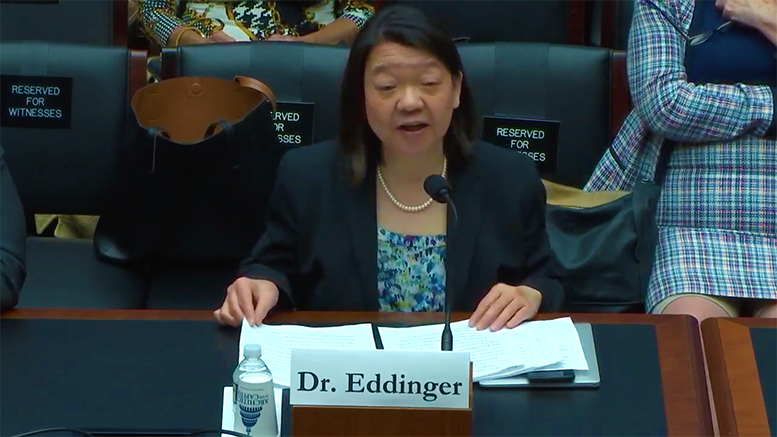There’s little doubt that “wraparound” services — tutoring, counseling, child care, transportation and other non-instructional services — can help students, especially those at community colleges, complete their credentials. The issue is whether states and the federal government are willing to increase funding for such services.
A House higher education subcommittee on Thursday examined how to help more students finish college. Completion benefits not only students but society and the economy by improving family income, reducing reliance on public welfare and lowering incarceration, while developing a highly skilled workforce that employers desperately want, said Rep. Susan Davis (D-California), chair of the House Subcommittee on Higher Education and Workforce Investment.
“Rather than splitting hairs about a one or two percent increase in funding levels, we should take bold steps to invest in students, feeling secure in the knowledge that our investment will pay off as we see more Americans earning college degrees, filling high-demand jobs and giving back to their communities,” she said.
Focus on adult learners
Pam Eddinger, president of Bunker Hill Community College (BHCC) in Boston, noted that the number of traditional college-age students in Massachusetts — and in the U.S., in general — will steeply drop over the next five years. To help meet employers’ needs, BHCC and other community colleges are focusing more on adult learners, who typically are working full-time, raising families and juggling other responsibilities.
“They are financially fragile, yet they know college leads to a better job and economic mobility,” she said.
Most students do not drop out because they lack motivation or have bad grades, Eddinger added. Among those who dropped out, 60 percent had a cumulative GPA of 2.5 or greater, and 40 percent had completed more than a year’s worth of classes. It was the pressures of food, transportation and child care that derailed them, she said.
Who funds it?
Susan Dynarski, professor of public policy, education and economics at the University of Michigan, noted that for elementary and secondary schools, additional resources go to students with greater need. In college, the equation is flipped.
“Schools that enroll students with the greatest need get the fewest resources,” Dynarski said.
She cited College Board figures that show about $10,000 is spent annually per full-time community college student, compared to $14,000 for public four-year college students and $45,000 for students at private universities.
Those resources matter when it comes to higher graduation rates, Dynarski said. She noted the ASAP program developed by the City Univerity of New York, which provides wraparound services and, as a result, has more than doubled its student graduate rate. Ohio has adopted the model and seen similar results.
Making up lost ground
States and local governments cut public higher education funding during the recession, which resulted in higher tuition, higher student debt and lower completions, Dynarski said.
“This pattern is likely to repeat itself with the next recession, leading to another spike in dropouts, student loan defaults and financial distress,” she said.
While lawmakers on both sides of the aisle seemed to agree that students’ needs are changing and comprehensive student services work, some questioned what the federal government’s role should be. Rep. Virginia Foxx (R-North Carolina) pointedly said that colleges should step up and keep government out.
“Let’s not give the government an excuse to put its hooks deeper into college campuses and student life by providing the services you should have been providing all along,” she said to a panel of speakers from colleges and universities. “When a student is admitted to an institution, it has to be a two-way agreement: the student commits to meeting academic standards and a steep financial commitment, and the institution has the responsibility to help them. It’s that simple.”
Updating Pell, Work Study
Some lawmakers asked whether changes to the Pell Grant program might help. Subcommittee ranking member Rep. Lloyd Smucker (R-Pennsylvania) noted a Pell “bonus” for students who enroll in enough credit courses to graduate on time.
“It’s usually the small amounts of money that make a big difference,” said M. David Rudd, president of the University of Memphis.
Eddinger suggested tying the Pell Grant award amount to the inflation index and also factoring in basic needs as part of the calculation. The cost of unmet needs on her campus are about $5,000 per student.
“That’s the food, the housing, the child care and the transportation,” she said.
She added that aligning Pell better with other programs, such as federal SNAP benefits, would help students. For example, doing homework could replace work requirements for SNAP benefits so students could focus on their studies.
The panel also discussed how to make the federal Work Study experience more relevant and tied to students’ career paths. Students in Work Study could also serve as peer mentors or tutors, too, which promotes retention, Eddinger said.
In general, apprenticeships, paid internships and experiential learning opportunities with transportation stipends would also help students by providing work related to their career goals, she said.
“The best retention strategy is a promised job down the line,” she said.
The House hearing was part of a series to explore issues pertaining to postsecondary education as Congress looks to reauthorize the Higher Education Act.

